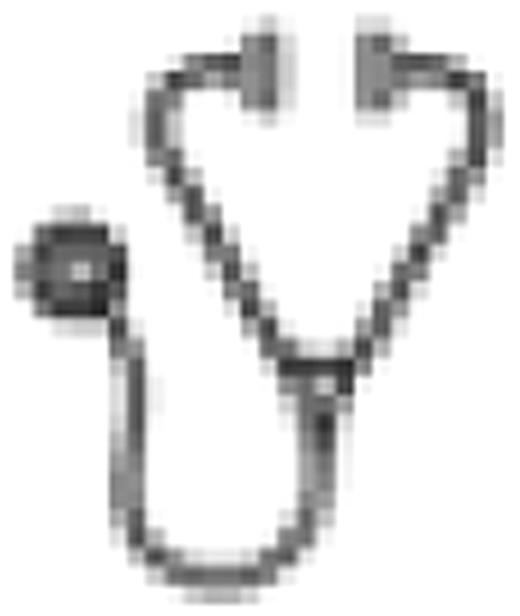Abstract
Abstract 2051
Beta-thalassemia patients on regular transfusions develop progressive iron overload. The introduction of noninvasive measures of hepatic and cardiac iron loading (MRI T2*) has made the monitoring of iron excess in regularly transfused thalassemia patients more accessible and annual assessments are now feasible to assist in chelation management and dose adjustments.
We have retrospectively reviewed 46 beta-thalassemia major patients, 37 female (F) and 20 male (M), with a mean age 30.1yr (range 9–59yr). All received regular transfusions to maintain pre transfusion Hb levels of 9 to10 gm/dl and had 2 or more annual MRI T2* studies. All 46 patients were treated with deferasirox. Each patient was monitored yearly for iron concentration by hepatic and cardiac magnetic resonance imaging (MRI) T2*. They were also assessed with monthly evaluations for liver and renal function (Bili, AST, ALT, BUN, Creatinine), serum ferritin, CBC, and urinalysis. Annual EKG, ECHO, hearing and vision testing and endocrine evaluations were performed. Patients were divided into 4 groups related to initial liver iron concentration (LIC) in mg/gm dry weight (dw), Group A (<3, n = 14), Group B (3-7, n = 8), Group C (7-15, n = 12) and Group D (>15, n = 12). They were also divided into 3 groups based on the initial cardiac T2*, Group 1 (>20ms, n = 26), Group 2 (10-20ms, n = 9) and Group 3 (<10ms, n = 10). Annual baseline and follow up studies of the patient groups were compared using paired student T test.
Over the course of 1 year, mean baseline LIC was unchanged compared to the mean LIC at 1 year follow-up in Group A (1.6 vs 1.6), and stable in Group B (4.5 vs 3.5, p value 0.4), but significantly decreased for Group C (9.5 vs 4.8, p value 0.003) and Group D (17.6 vs 7.9, p value 0.00003). Mean baseline Cardiac T2* measurements compared to the mean cardiac T2* measurements at 1 year follow-up remained normal in Group 1 (39.4 vs 37.4, p value 0.13), and improved in Group 2 (13.7 vs 22.3, p value 0.1) as well as in Group 3 (7.4 vs 8.9, p value 0.12), however they were not statistically significant. The LIC values within each cardiac T2*group were also examined. In Group 3 (cardiac T2*<10ms), only 2 patients had LIC >15mg/gm dw at baseline. At 1yr follow up both patients had improved LIC (19.8 to 10; 15.1 to 7.24) and improved cardiac T2* (Table 1). In Group 1(cardiac T2*>20ms, n=26), all patients had LIC less than 7.5mg/gm dw of liver. Only one Group 1patient had worsening of LIC (6.19 to 10.8) at 1yr follow up. There was no significant difference in the cardiac T2* at 1yr follow up in Groups C (LIC 7–15) and D (LIC >15) patients, even though there was a significant decrease in LIC. There were 4 patients with cardiac T2*<10ms in Group D, of which only one improved, even though there was improvement in LIC for all the 4 patients at 1 yr follow up. LIC improved significantly when the baseline was above 7mg/gm dw of liver and remained stable in others with lower LIC. None of the patients in Groups 1, 2 and 3 had worsening of cardiac T2* when their LICs improved.
Improvement in mean cardiac T2* appears to lag behind improvement in mean LIC at 1yr follow up in all patient groups. However, no statistically significant differences were noted on cardiac T2* at 1yr follow up irrespective of the baseline cardiac T2* and LIC values. Annual monitoring of transfusion iron overload and chelation effect are now available, which raises the question of variable organ responsiveness and the need for targeted chelation therapy.
Cardiac T2* values and their corresponding LIC for patients in Group 3 (cardiac T2*<10ms)
| Patients . | Baseline LIC (mg/gm dry weight) . | 1 yr follow up LIC (mg/gm dry weight) . | Baseline cardiac T2* (ms) . | 1yr follow up cardiac T2*(ms) . |
|---|---|---|---|---|
| 1 | 8.5 | 10 | 5.2 | 8 |
| 2 | 2 | 2 | 5.6 | 8 |
| 3 | 19.8 | 10.03 | 6.4 | 9 |
| 4 | 5.6 | 1.96 | 7 | 10 |
| 5 | 2.1 | 0.62 | 8.1 | 10 |
| 6 | 15.1 | 7.24 | 8.4 | 14 |
| 7 | 1.4 | 2 | 8.7 | 10.7 |
| 8 | 10 | 18.2 | 8 | 5 |
| 9 | 1.78 | 4.78 | 8 | 7 |
| 10 | 1.29 | 0.84 | 9 | 7 |
| Patients . | Baseline LIC (mg/gm dry weight) . | 1 yr follow up LIC (mg/gm dry weight) . | Baseline cardiac T2* (ms) . | 1yr follow up cardiac T2*(ms) . |
|---|---|---|---|---|
| 1 | 8.5 | 10 | 5.2 | 8 |
| 2 | 2 | 2 | 5.6 | 8 |
| 3 | 19.8 | 10.03 | 6.4 | 9 |
| 4 | 5.6 | 1.96 | 7 | 10 |
| 5 | 2.1 | 0.62 | 8.1 | 10 |
| 6 | 15.1 | 7.24 | 8.4 | 14 |
| 7 | 1.4 | 2 | 8.7 | 10.7 |
| 8 | 10 | 18.2 | 8 | 5 |
| 9 | 1.78 | 4.78 | 8 | 7 |
| 10 | 1.29 | 0.84 | 9 | 7 |
Giardina:Novartis: Research Funding.

This icon denotes an abstract that is clinically relevant.
Author notes
Asterisk with author names denotes non-ASH members.

